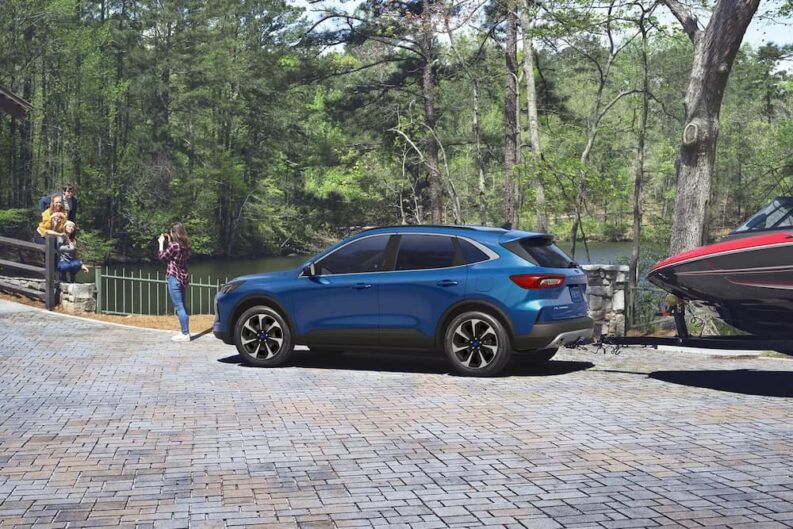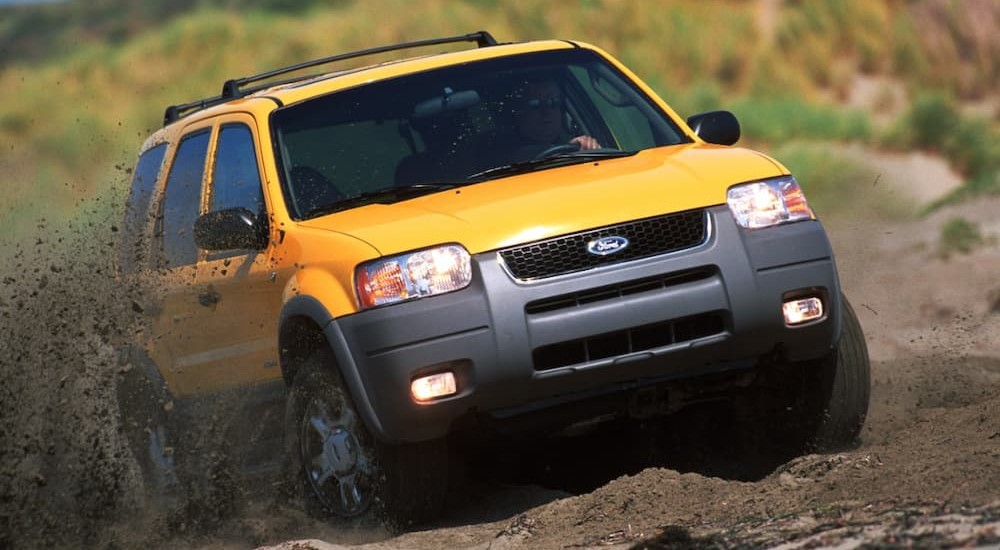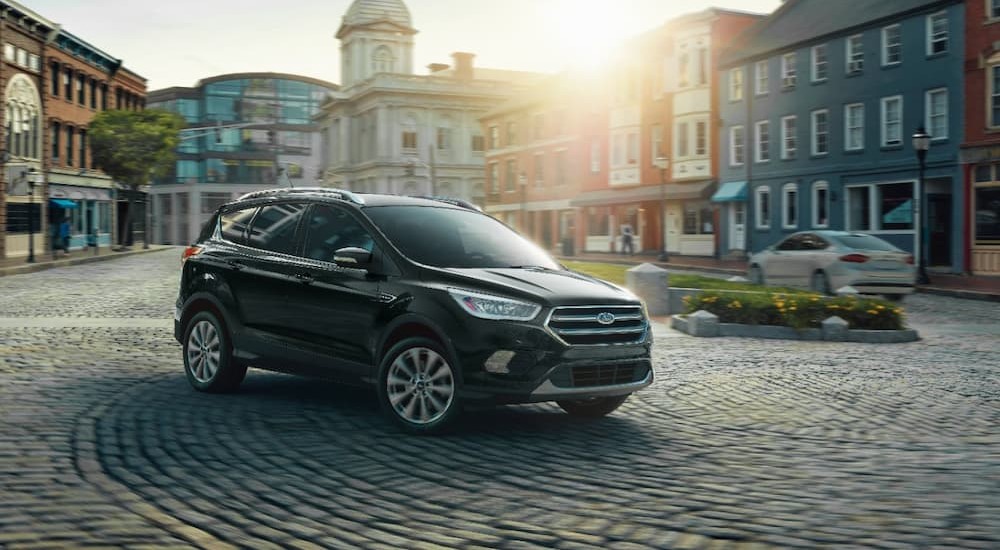The Ford lineup has always been about delivering fantastic vehicles that meet the needs of drivers, whether that’s a powerful truck that helps someone get their job done or a comfortable SUV designed to ease one’s daily commute. That means there is a huge variety of vehicles waiting at any given used Ford dealership to make someone’s next drive more rewarding. With legendary models like the Ford F-150 and Mustang at these dealerships, other vehicles can sometimes be overlooked, despite the fact that they offer a terrific driving experience with what a lot of drivers need. One of these vehicles is the Ford Escape.
Going strong for more than two decades now, the Escape is a compact crossover that perfectly demonstrates the commitment Ford has for their vehicles. It’s the perfect example of how an everyday ride can be elevated and made more rewarding for drivers and passengers alike. Being on the market for more than 20 years means there are a lot of different Escape models out there, and the differences from one model year to another can be significant. Let’s take a look at where the Escape has been since it was first introduced.
Ford Escape First Generation (2001-2007)
The original Ford Escape was developed as a joint venture alongside Mazda, who Ford had a controlling interest in at the time. When it was released for the 2001 model year, the Escape shared a platform with the Mazda Tribute. The Escape was a compact crossover, smaller than the popular Explorer that had been getting larger over the years. It appealed to a wide range of drivers, and has maintained this position in the decades since its release, continuing to be a fantastic option for drivers looking for a great daily use crossover SUV.
When it launched for its first generation, two engines were offered: a 127 horsepower I-4 and an available 201 horsepower V6. The standard I-4 engine came to the Escape by way of Mazda, while Ford provided the robust V6 that quickly became a favorite among many drivers. Reviewers were quick to applaud the overall design and engineering that went into the Escape, particularly with its V6 engine; the standard engine was considered acceptable but far from impressive. Front-wheel drive was standard for the first generation, with all-wheel drive available to allow for some light off-roading and better performance in bad weather.
Ford learned a lot about what drivers were looking for from the Escape during its first few years, and the 2005 model year saw a refresh and facelift. In particular, Ford paid attention to the powertrain, including a new standard I-4 that helped boost horsepower to 133 and make it a more attractive prospect for a wide range of drivers. The available V6 remained the most powerful engine offered on the Escape, but these two were joined by a new 2.3L I-4 hybrid engine to help boost efficiency.
It wasn’t just engine options that received an overhaul with the 2005 update. The front end of the Escape was redesigned, and new safety features were added like advanced airbags and improved seatbelts. An automatic transmission became available on the base trim for the 2005 model, and the interior was refreshed. The first few years for the Escape had rear seats that could recline, something that’s become standard in many crossover models these days, but this update eliminated those in order to improve safety for rear seat passenger.
Ford Escape Second Generation (2008-2012)
For the 2008 model year, Ford launched an all-new second-generation model of the Escape with a number of impressive upgrades. Most of the updates for the second generation involved its overall performance and driving experience, like the addition of electronic stability control as a standard feature on all Escape models. While the compact size of the Escape means stability control was not as essential for it as larger Ford SUVs, it was still a welcome addition to help improve overall handling and make it feel better to drive. The engines remained largely the same for the 2008 model, but the standard I-4 engine was updated and improved for 2009 with boosted horsepower to 171, and the available V6 engine got a bump to 240 horsepower. A six-speed automatic transmission became the standard with the V6 engine and available with the I-4.
The look of the Escape’s second generation was clearly informed by other Ford models such as the Explorer, creating a more comprehensive overall look for their lineup. This included a number of alterations, such as a new grille, larger headlights, and more. The interior of the second-generation Escape was revamped to become more inviting and to integrate some of Ford’s latest tech features and options. This included Ford’s SYNC infotainment system, which was impressive but has certainly been improved in the decade or so since then.
Ford Escape Third Generation (2013-2019)
For the 2013 model year, Ford released a redesigned third-generation Escape. It’s worth noting that it was called the Ford Kuga in many parts of the world outside of North America. This new model was marked by major changes to the powertrain. The 2.5L I-4 remained standard, but the V6 engine and previously-available hybrid were both discontinued. Instead, Ford introduced a pair of available turbocharged engines. A 1.6L turbo I-4 produced 178 horsepower while still delivering 26 MPG, a great choice for fuel economy. The other option, a 2.0L turbo inline-4, made the same 240 horsepower as the discontinued V6, yet still got an impressive 25 MPG. FWD remained standard on the Escape, with AWD available on higher trims for improved control.
The redesigned Escape proved quite popular, yet received a refresh for the 2017 model year to give it an updated look and some excellent additions. Exterior updates include a new front fascia and revised grille, along with changes to the rear end such as new LED tail lights. Inside the updated Escape, Ford delivered their SYNC 3 infotainment system with improved connectivity to smartphones and similar devices, allowing for remote lock/unlock and remote start functionality. Innovative safety systems like a Forward Collision Warning and Enhanced Park Assist also became available with this impressive update.
Ford Escape Fourth Generation (2020-Present)
For the 2020 model year, Ford rolled out a new and fully redesigned Escape that includes a fantastic range of improvements and updates. For starters, the Escape has become longer and wider, yet the use of new materials and reengineering has made it lighter than the previous model. This larger design provides greater passenger room, though the Escape remains a compact crossover model that’s perfect for getting around town.
Perhaps the most exciting aspect of the fourth generation is that numerous engine options are available. The standard engine is now a 1.5L turbo I-3 generating 181 horsepower, more than the previous 2.5L standard engine. The 2.0L turbo I-4 now makes 250 horsepower. For the economy-minded, the hybrid option returns, as well as a plug-in hybrid model that can be driven short distances on electric power only. Each of these uses a 2.5L I-4 gas engine. Combined with the electric drivetrain, the hybrid makes 192 horsepower and gets a combined 39 MPG, while the plug-in hybrid makes 210 horsepower and gets an estimated 37 MPG.
Along with these new engine options, the interior of the fourth-generation Escape received a massive overhaul and looks better than ever. It features a large infotainment display, plus a stunning available driver screen that elevates one’s experience behind the wheel. It’s clear that Ford has been taking notes from what few criticisms they received and delivered a fantastic compact model.
No Need to Escape From This Crossover
There is a ton of competition in the compact crossover segment, yet, Ford has managed to stay competitive with the Escape, even against other models like the RAV4, Toyota’s best-selling vehicle. Looking at how the Escape has changed and developed in the two decades since it was first introduced, it’s easy to see that Ford has been listening to feedback and working to develop a vehicle that can keep up with some of the most demanding competition in the auto industry. The fact that it just keeps getting better, year after year, update after update, truly demonstrates how well Ford understands how to innovate and create vehicles that are fun to drive.






